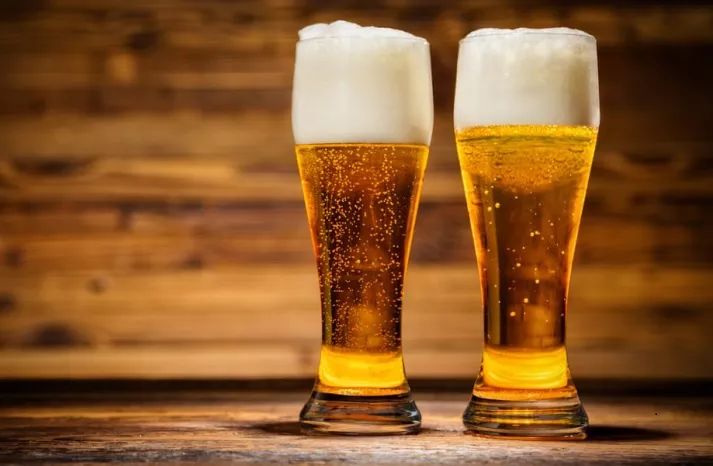Beer, one of the world’s oldest and most beloved beverages, comes in a wide array of styles, flavors, and strengths. While beer can be a delightful treat, it’s no secret that it can also contribute to caloric intake. In this professional article, we will explore the world of low-calorie beers, offering insights into the best options for those looking to enjoy a refreshing brew without compromising their caloric goals.
Understanding Beer and Calories
Before we dive into the world of low-calorie beers, it’s important to understand the relationship between beer and calories. Beer is brewed primarily from malted barley, water, hops, and yeast. The sugars in malted barley provide the fermentable sugars necessary for the yeast to produce alcohol, carbonation, and flavor. These sugars are what contribute to the caloric content of beer.
The caloric content of beer is determined by the alcohol by volume (ABV), residual sugars, and other ingredients used during the brewing process. Typically, beers with higher ABV, more residual sugars, or added ingredients like fruits, spices, or flavorings will have more calories.
Low-Calorie Beer: A Growing Trend
In recent years, there has been a growing trend toward healthier lifestyles, including a focus on lower-calorie beverage options. As a result, many breweries have responded by producing low-calorie beer options that cater to those who enjoy beer but want to manage their calorie intake.
Low-calorie beers are designed to provide the flavor and satisfaction of traditional beers with fewer calories. While they may not have the complexity and body of full-calorie brews, they offer a suitable compromise for individuals who want to enjoy a refreshing beer without the added calories.
Factors That Influence Beer Calories
Several factors influence the calorie content of a beer:
Alcohol by Volume (ABV): Higher ABV beers contain more alcohol, which contributes to additional calories. Low-calorie beers often have lower ABV to reduce calorie content.
Residual Sugars: The amount of sugar left in the final beer can impact calorie count. Low-calorie beers are usually fermented to minimize residual sugars.
Ingredients: Additional ingredients like fruits, spices, and flavorings can add calories. Low-calorie beers tend to be simpler in terms of ingredients.
Brewing Process: The brewing process, such as mashing, boiling, and fermentation, can influence the final caloric content. Low-calorie beers are crafted with an eye toward minimizing calorie-rich steps.
Best Low-Calorie Beers
Now, let’s explore some of the best low-calorie beer options available for those who want to enjoy a beer without consuming excessive calories. These selections are based on taste, calorie count, and popularity.
1. Budweiser Select 55: Budweiser Select 55 is an ultra-light beer with only 55 calories per 12-ounce serving. While it’s incredibly light in both calories and taste, it’s an excellent option for those looking to minimize their calorie intake while still enjoying a beer.
2. Michelob Ultra: Michelob Ultra is a popular choice among fitness enthusiasts. It contains 95 calories per 12 ounces and maintains a light, crisp flavor that is easy to drink.
3. Corona Premier: Corona Premier offers the familiar taste of Corona with only 90 calories per 12 ounces. It’s a solid option for those who enjoy a light, refreshing beer with a touch of citrus.
4. Heineken Light: Heineken Light is the lower-calorie sibling of the classic Heineken. It contains 99 calories per 12 ounces and retains the signature Heineken flavor.
5. Guinness Draught: Surprisingly, Guinness Draught is relatively low in calories, with 125 calories per 12 ounces. It’s a great choice for those who prefer a dark, rich beer but still want to keep their calorie count in check.
6. Lagunitas DayTime IPA: Lagunitas DayTime IPA is an option for those who enjoy hoppy beers but want to keep the calories down. It contains 98 calories per 12 ounces and offers a hop-forward flavor.
7. Dogfish Head Slighty Mighty: This low-calorie beer from Dogfish Head contains 95 calories per 12 ounces. It’s a sessionable beer with a tropical and citrusy character.
Choosing the Right Low-Calorie Beer
Selecting the right low-calorie beer is a matter of personal preference. Consider the following factors when making your choice:
1. Flavor Preference: Low-calorie beers come in a range of flavors, from light lagers to hoppy IPAs. Choose a beer that aligns with your flavor preferences.
2. Alcohol Content: Low-calorie beers often have lower ABV, which can impact the overall experience. If you enjoy the effects of alcohol, consider this when making your choice.
3. Occasion: The occasion can also influence your choice. A light lager might be perfect for a hot summer day, while a dark beer can be a comforting choice during cooler months.
Calorie-Counting Tips
If you’re actively managing your calorie intake but still want to enjoy a beer now and then, here are some tips to keep in mind:
1. Be Mindful of Serving Size: Pay attention to the serving size, as the calorie count is often listed for a specific volume (e.g., 12 ounces). Larger containers will contain more calories.
2. Read Labels: Check the label for nutritional information. This will provide you with the most accurate calorie count.
3. Enjoy in Moderation: Drinking in moderation is key. While low-calorie beers can help you manage your calorie intake, excessive consumption can negate these efforts.
Conclusion
Low-calorie beers have become a popular choice for those looking to enjoy a beer while managing their calorie intake. These beers offer a variety of flavors and styles, making it possible to find a low-calorie option that suits your taste preferences.


